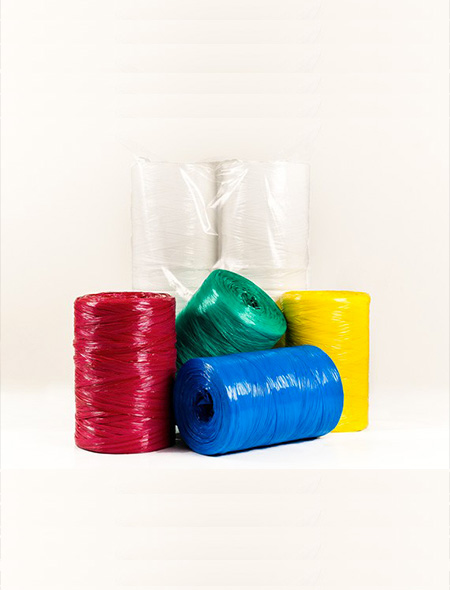BALER TWINE FROM POLYPROPYLENE / SYNTHETIC TWINE:
We produce baler polypropylene twine according to international standards. The string is carefully checked and tested in the factory laboratory by our quality control department to ensure that customers receive the string of the highest quality. In addition to the UV additive, all pigments used for color (blue, black, iron oxide, etc.) are approved for food contact. UV protection is a standard for all types of twine we produce.
Our factory is equipped with the most modern extrusion lines and twisting machines, all electronically controlled, under the supervision of skilled workers. This is yet another guarantee for the quality and performance of our twine.
The production system is totally flexible, capable of meeting the requirements of all types of polypropylene balls used today. This guarantees the full satisfaction of the twine end users.
We manufacture in our factory 5 types of strings:
Our factory is equipped with the most modern extrusion lines and twisting machines, all electronically controlled, under the supervision of skilled workers. This is yet another guarantee for the quality and performance of our twine.
The production system is totally flexible, capable of meeting the requirements of all types of polypropylene balls used today. This guarantees the full satisfaction of the twine end users.
We manufacture in our factory 5 types of strings:
- Type 350: Baler twine for fodder used in the packaging of bales of hay.
- Type 500: Baler twine for presses used in combine harvester machines for packing straw bales.
- Type 600: Baler agricultural twine for harvesting used in certain types of straw bale packaging machines
- Type 750: Twine for packaging used generally to pack vegetable or other crops
- Type 1000: baler twine for market gardening or horticulture used in greenhouses to hold certain types of vegetable plantations such as tomato or cucumber, or trellising of vines
Technical characteristics of baler twine
|
Réf |
Effective m/kg |
Weight/bale (2spools) kg |
Average linear resistance kgf |
Guaranteed linear resistance kgf |
length of a coil |
N° of Bales by/Pallet |
pallet Weight p/ Kg |
|
350 |
300 |
10 |
145 |
125 |
1805 |
80 |
800 |
|
500 |
450 |
10 |
100 |
85 |
2250 |
80 |
800 |
|
600 |
550 |
04 |
92 |
77 |
1100 |
400 |
800 |
|
750 |
714 |
10 |
72 |
64 |
3570 |
80 |
800 |
|
1000 |
933 |
10 |
67 |
52 |
4665 |
80 |
800 |
 FRANÇAIS
FRANÇAIS





